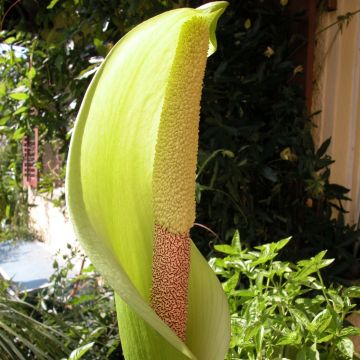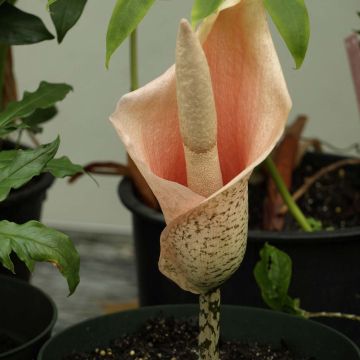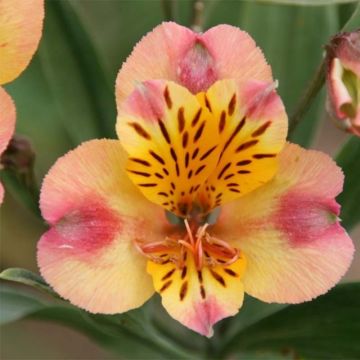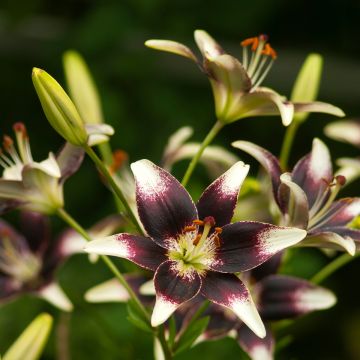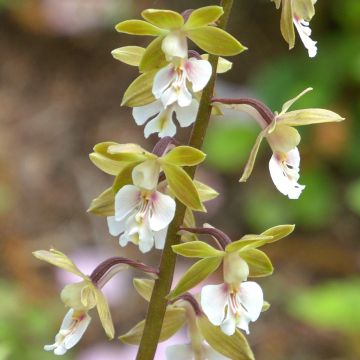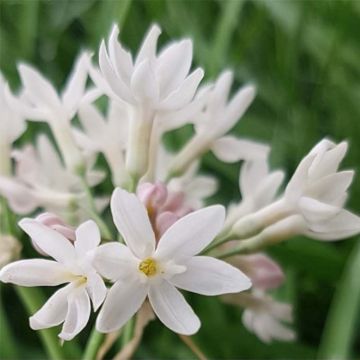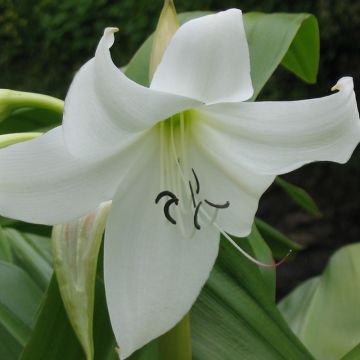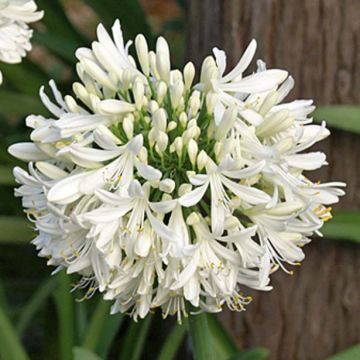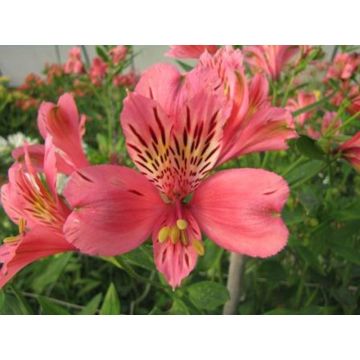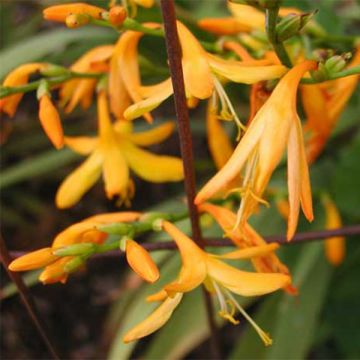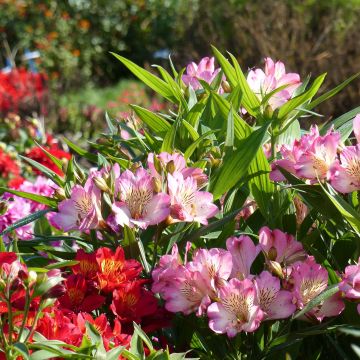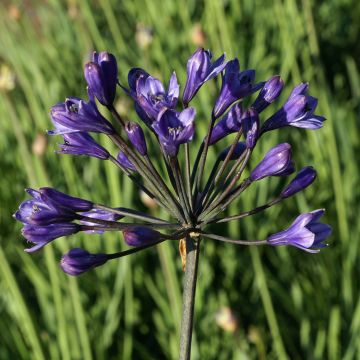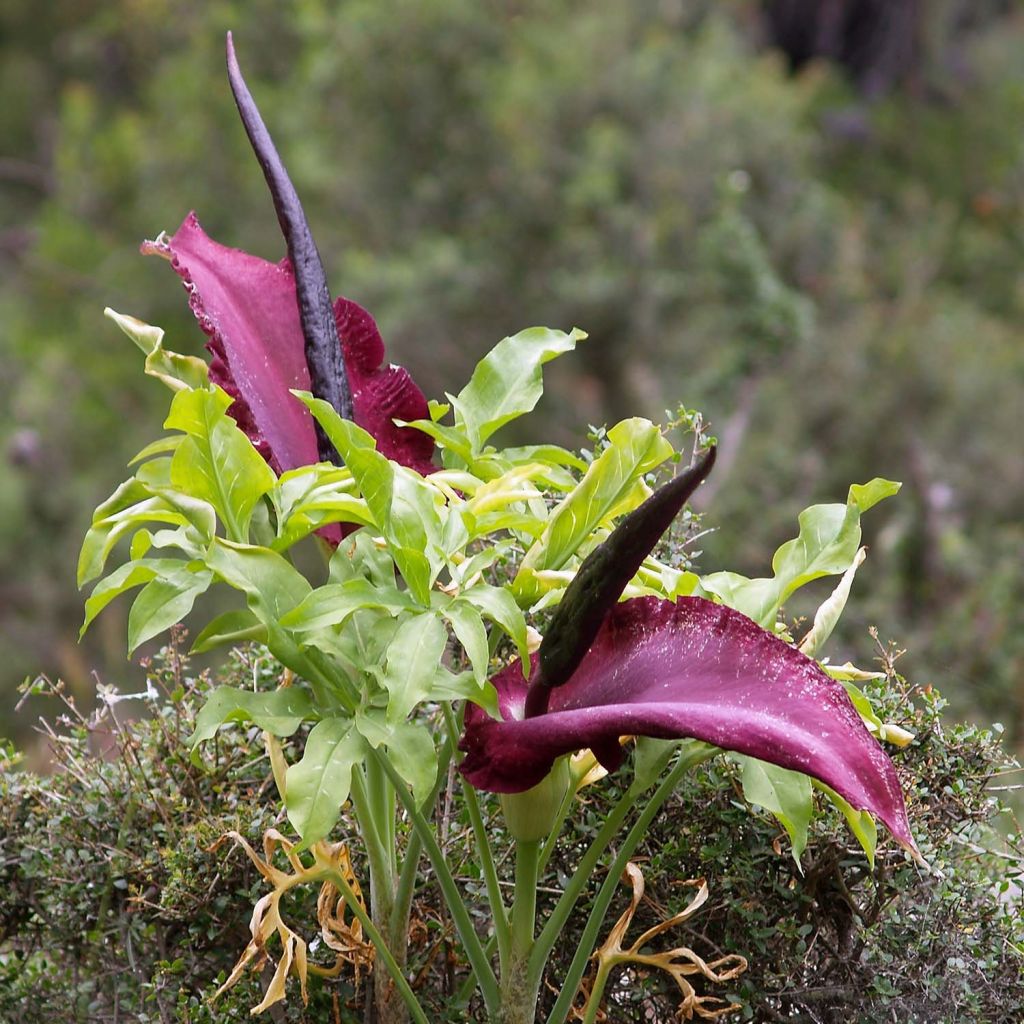

Dracunculus vulgaris - Dragon Lily
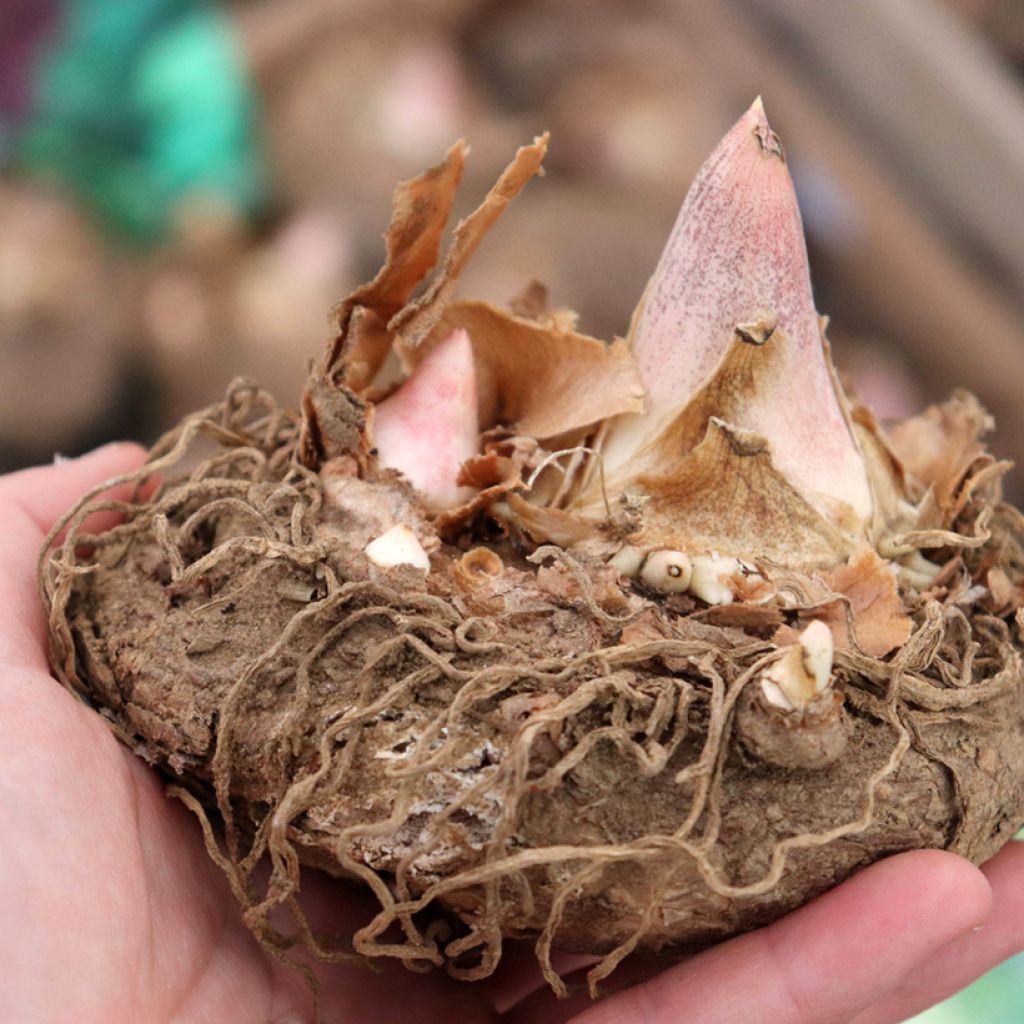

Dracunculus vulgaris - Dragon Lily
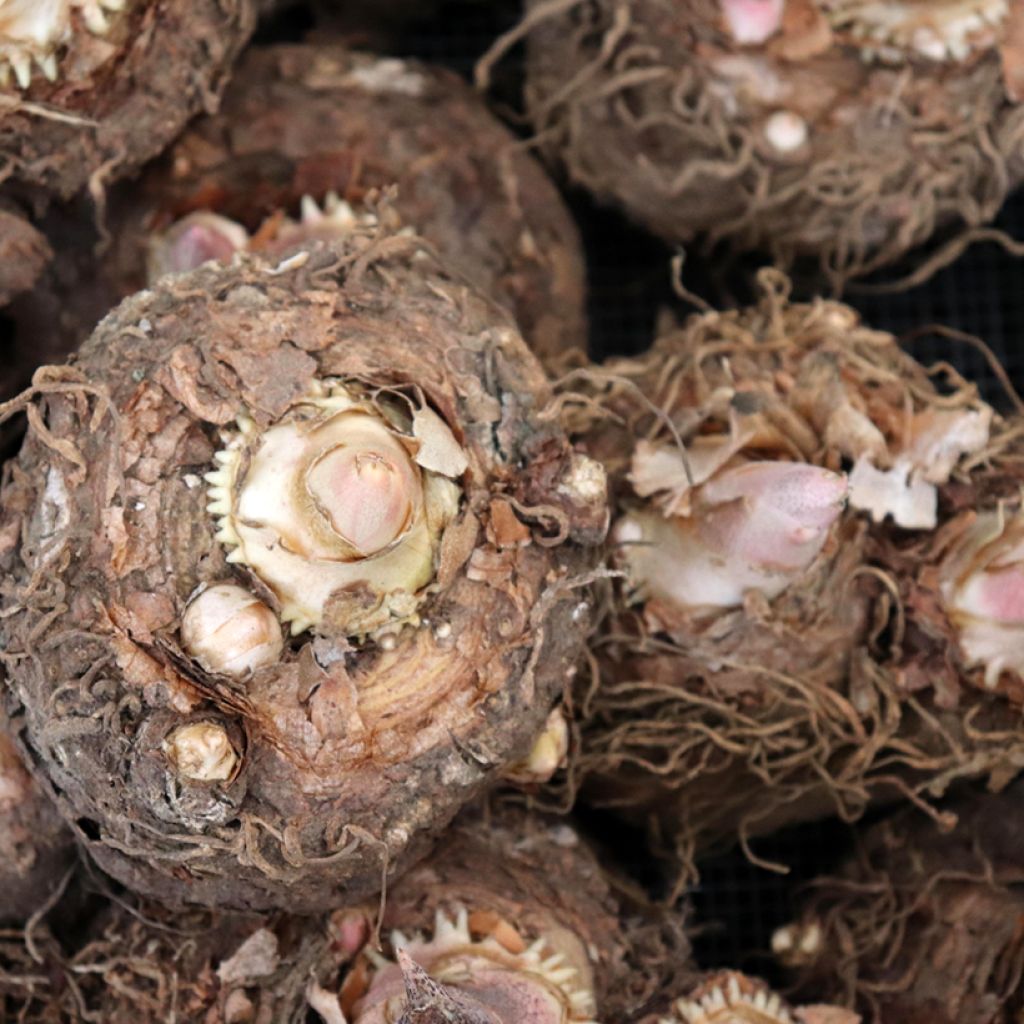

Dracunculus vulgaris - Dragon Lily
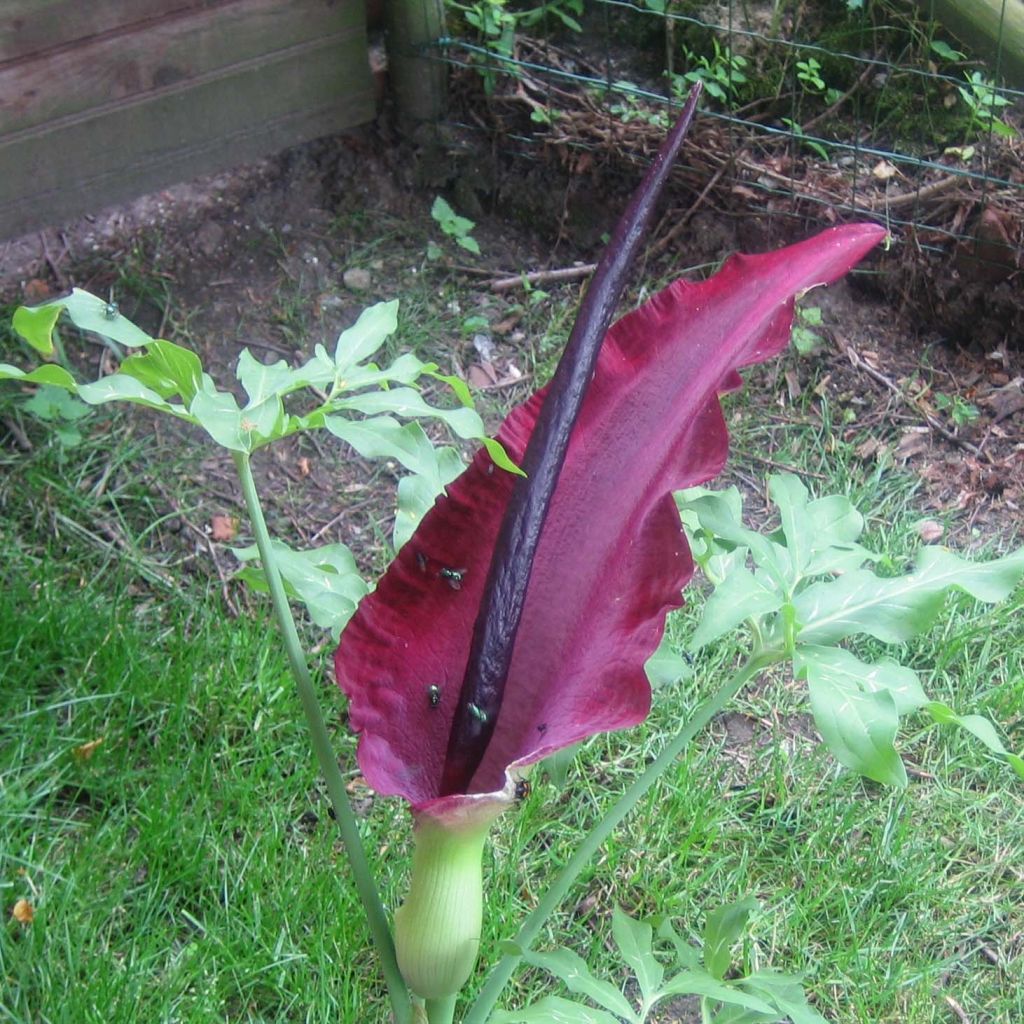

Dracunculus vulgaris - Dragon Lily
Dracunculus vulgaris - Dragon Lily
Dracunculus vulgaris
Dragon Lily, Dragon arum, Black dragon, Black arum, Brook leek
This item cannot be shipped to the selected country
Delivery charge from €5.90
More information
Schedule delivery date,
and select date in basket
This plant carries a 6 months recovery warranty
More information
We guarantee the quality of our plants for a full growing cycle, and will replace at our expense any plant that fails to recover under normal climatic and planting conditions.
From €5.90 for pickup delivery and €6.90 for home delivery
Express home delivery from €8.90.
Does this plant fit my garden?
Set up your Plantfit profile →
Description
Dracunculus vulgaris, also known as dragon arum or snake plant, is a spectacular tuberous plant with an evil charm. Its flowering is astonishing, both for its appearance of an enormous cone of purple velvet and its shocking smell. This cousin of arums is an authentic botanical curiosity. It has naturalised in the Mediterranean region, where it grows in rocky terrain and under deciduous trees. It can also be grown in colder regions by protecting the stump well in winter. Whether in the ground or in pots, this unique creation deserves a prominent position. However, avoid placing in a windy spot that will blow its fragrance towards your visitors!
Dracunculus vulgaris belongs to the Araceae family. It is a perennial herbaceous plant native to the eastern Mediterranean, specifically from an area ranging from Albania to Crete and Turkey. It can also be found in Italy, southern France, Corsica, and even North Africa. Its mature size depends on growing conditions, and can vary from 60cm (24in) to 1.5m (5ft) in height.
Its bulb is a round and flat tuber. In February-March, it produces a stem striped with dark green, pale green, and black-brown, which quickly elongates and thickens. The pattern on the stem has given it the name of snake plant. The stem bears large triangular leaves measuring 40 to 45cm (16 to 18in) wide, divided into 5 to 15 lobes. They are shiny dark green, sometimes speckled with white. In May-June, the foliage begins to dry and the inflorescence develops at the tip of the stem. It takes the form of a large elongated cone, green in colour, with undulated and curled purple edges. Its size varies from 15cm (6in) in the first year to 50 to 60cm (20 to 24in) in length on a mature plant, but it can exceed 1m (3ft) if the plant grows in deep and rich soil. The cone gradually unfurls, revealing a superb velvety interior of a deep red to dark Bordeaux colour. A large black column called the spadix sits in the centre. This spadix serves as the receptacle for tiny flowers, with the male flowers located on its upper part and the female flowers at the bottom. The female flowers mature before the male flowers and emit a carrion-like odour until they are fertilised. The "scent" then disappears. Pollination is cross-pollination, carried out by flies and beetles that bring mature pollen from another spathe to the female flowers of the first plant. The bright orange rounded fruits are toxic. This plant also multiplies through small tubercles that form around the parent tuber. The plant goes into dormancy in summer, thus escaping drought and summer heat.
In the past, people from the countryside of the Mediterranean region called it the snake arum. They placed the plant beside their front doors (!), perhaps to ward off evil spirits or temporarily keep away snakes and unwanted visitors from the house. We still recommend planting it near your home to enjoy its spectacular flowering, but do take into account the direction of the prevailing wind! Plant the tuber deeply in the ground. It will withstand temperatures down to -10°C (14°F) if you apply a thick mulch to its stump in winter. Dracunculus vulgaris can be planted at the base of deciduous trees, against a wall, or in a natural bed with euphorbias, bear's breeches, and variegated ivy used as ground cover.
Report an error about the product description
Dracunculus vulgaris - Dragon Lily in pictures
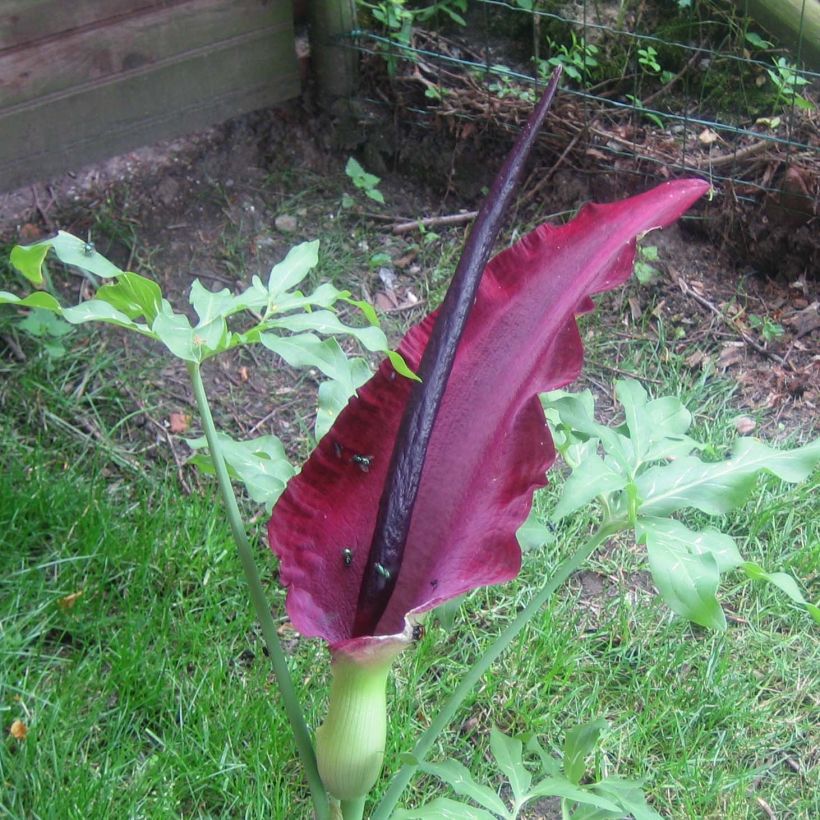

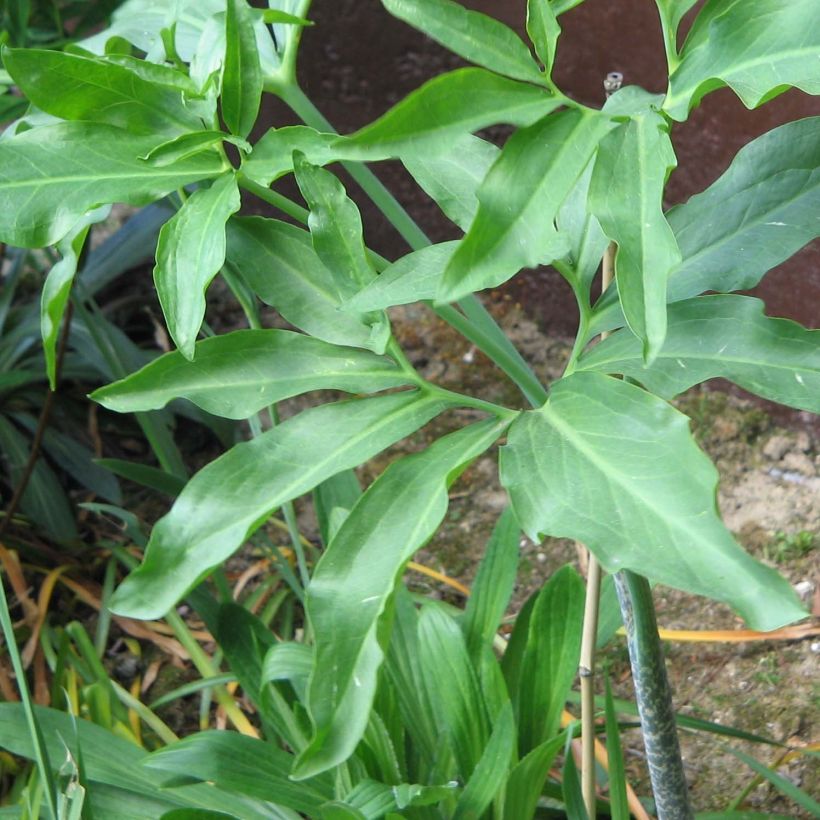

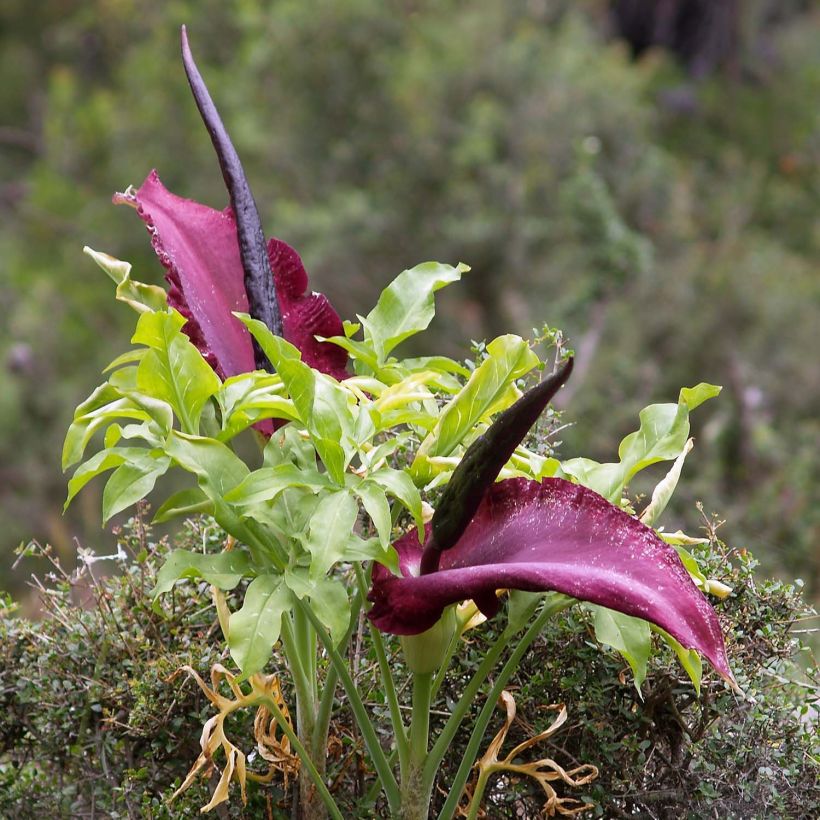

Plant habit
Flowering
Foliage
Botanical data
Dracunculus
vulgaris
Araceae
Dragon Lily, Dragon arum, Black dragon, Black arum, Brook leek
Mediterranean
Other Amorphophallus
Planting and care
Ideally, it should be planted in September, or at the latest in early spring. In warm regions, the plant grows in the sun or in the dappled shade of the undergrowth. In cooler regions, choose a warm location protected from the cold, in front of a hedge or a south-facing wall. The soil should be well-prepared, loose, rich, and well-drained. Plant the tubers deeply (20 to 30cm (8 to 12in)). Place a layer of gravel under the tuber to isolate it from excessive moisture. A thick winter mulch provides better protection against the cold. Under these conditions, Dracunculus vulgaris can withstand temperatures as low as -10°C (14°F).
The plant requires water from late winter until the end of spring, during its growth and flowering period. Watering, however, is unnecessary and even discouraged during the summer dormancy period. Excessively moist soil in winter is also detrimental. You can apply a good base fertiliser or a shovelful of compost mixed with ashes every autumn, as this will promote growth. The more reserves the tuber stores, the more it will flower and the larger its flowers will be.
Planting period
Intended location
Care
-
, onOrder confirmed
Reply from on Promesse de fleurs
Hardy summer bulbs
Haven't found what you were looking for?
Hardiness is the lowest winter temperature a plant can endure without suffering serious damage or even dying. However, hardiness is affected by location (a sheltered area, such as a patio), protection (winter cover) and soil type (hardiness is improved by well-drained soil).

Photo Sharing Terms & Conditions
In order to encourage gardeners to interact and share their experiences, Promesse de fleurs offers various media enabling content to be uploaded onto its Site - in particular via the ‘Photo sharing’ module.
The User agrees to refrain from:
- Posting any content that is illegal, prejudicial, insulting, racist, inciteful to hatred, revisionist, contrary to public decency, that infringes on privacy or on the privacy rights of third parties, in particular the publicity rights of persons and goods, intellectual property rights, or the right to privacy.
- Submitting content on behalf of a third party;
- Impersonate the identity of a third party and/or publish any personal information about a third party;
In general, the User undertakes to refrain from any unethical behaviour.
All Content (in particular text, comments, files, images, photos, videos, creative works, etc.), which may be subject to property or intellectual property rights, image or other private rights, shall remain the property of the User, subject to the limited rights granted by the terms of the licence granted by Promesse de fleurs as stated below. Users are at liberty to publish or not to publish such Content on the Site, notably via the ‘Photo Sharing’ facility, and accept that this Content shall be made public and freely accessible, notably on the Internet.
Users further acknowledge, undertake to have ,and guarantee that they hold all necessary rights and permissions to publish such material on the Site, in particular with regard to the legislation in force pertaining to any privacy, property, intellectual property, image, or contractual rights, or rights of any other nature. By publishing such Content on the Site, Users acknowledge accepting full liability as publishers of the Content within the meaning of the law, and grant Promesse de fleurs, free of charge, an inclusive, worldwide licence for the said Content for the entire duration of its publication, including all reproduction, representation, up/downloading, displaying, performing, transmission, and storage rights.
Users also grant permission for their name to be linked to the Content and accept that this link may not always be made available.
By engaging in posting material, Users consent to their Content becoming automatically accessible on the Internet, in particular on other sites and/or blogs and/or web pages of the Promesse de fleurs site, including in particular social pages and the Promesse de fleurs catalogue.
Users may secure the removal of entrusted content free of charge by issuing a simple request via our contact form.
The flowering period indicated on our website applies to countries and regions located in USDA zone 8 (France, the United Kingdom, Ireland, the Netherlands, etc.)
It will vary according to where you live:
- In zones 9 to 10 (Italy, Spain, Greece, etc.), flowering will occur about 2 to 4 weeks earlier.
- In zones 6 to 7 (Germany, Poland, Slovenia, and lower mountainous regions), flowering will be delayed by 2 to 3 weeks.
- In zone 5 (Central Europe, Scandinavia), blooming will be delayed by 3 to 5 weeks.
In temperate climates, pruning of spring-flowering shrubs (forsythia, spireas, etc.) should be done just after flowering.
Pruning of summer-flowering shrubs (Indian Lilac, Perovskia, etc.) can be done in winter or spring.
In cold regions as well as with frost-sensitive plants, avoid pruning too early when severe frosts may still occur.
The planting period indicated on our website applies to countries and regions located in USDA zone 8 (France, United Kingdom, Ireland, Netherlands).
It will vary according to where you live:
- In Mediterranean zones (Marseille, Madrid, Milan, etc.), autumn and winter are the best planting periods.
- In continental zones (Strasbourg, Munich, Vienna, etc.), delay planting by 2 to 3 weeks in spring and bring it forward by 2 to 4 weeks in autumn.
- In mountainous regions (the Alps, Pyrenees, Carpathians, etc.), it is best to plant in late spring (May-June) or late summer (August-September).
The harvesting period indicated on our website applies to countries and regions in USDA zone 8 (France, England, Ireland, the Netherlands).
In colder areas (Scandinavia, Poland, Austria...) fruit and vegetable harvests are likely to be delayed by 3-4 weeks.
In warmer areas (Italy, Spain, Greece, etc.), harvesting will probably take place earlier, depending on weather conditions.
The sowing periods indicated on our website apply to countries and regions within USDA Zone 8 (France, UK, Ireland, Netherlands).
In colder areas (Scandinavia, Poland, Austria...), delay any outdoor sowing by 3-4 weeks, or sow under glass.
In warmer climes (Italy, Spain, Greece, etc.), bring outdoor sowing forward by a few weeks.

































